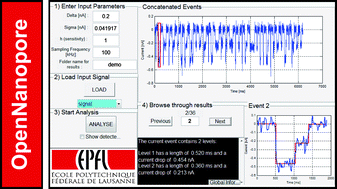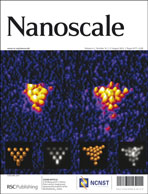Fast and automatic processing of multi-level events in nanopore translocation experiments†
Abstract
We have developed a method to analyze in detail, translocation events providing a novel and flexible tool for data analysis of nanopore experiments. Our program, called OpenNanopore, is based on the cumulative sums algorithm (CUSUM algorithm). This algorithm is an abrupt change detection algorithm that provides fitting of current blockages, allowing the user to easily identify the different levels in each event. Our method detects events using adaptive thresholds that adapt to low-frequency variations in the baseline. After event identification, our method uses the CUSUM algorithm to fit the levels inside every event and automatically extracts their time and amplitude information. This facilitates the statistical analysis of an event population with a given number of levels. The obtained information improves the interpretation of interactions between the molecule and nanopore. Since our program does not require any prior information about the analyzed molecules, novel molecule–nanopore interactions can be characterized. In addition our program is very fast and stable. With the progress in fabrication and control of the translocation speed, in the near future, our program could be useful in identification of the different bases of DNA.


 Please wait while we load your content...
Please wait while we load your content...